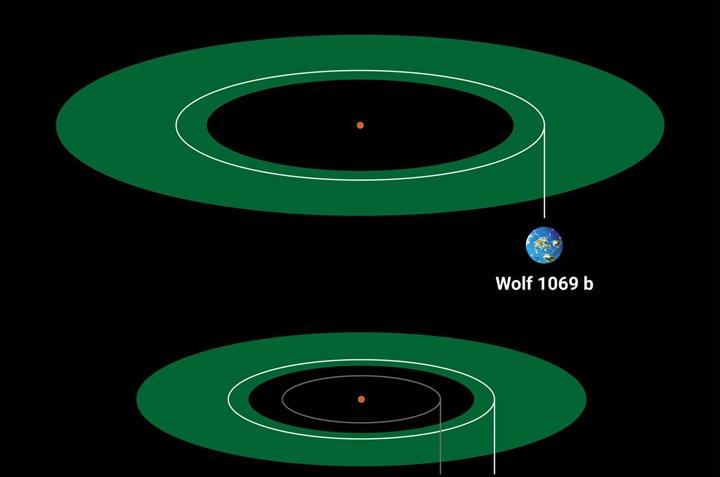 Astronomers have been studying the sky for a long time to find a habitable planet other than Earth. Of the more than 5000 planets found so far, only 200 are rocky and very, very few of them are close to us. Now, the discovered Wolf 1069 b exoplanet meets both conditions.
Astronomers have been studying the sky for a long time to find a habitable planet other than Earth. Of the more than 5000 planets found so far, only 200 are rocky and very, very few of them are close to us. Now, the discovered Wolf 1069 b exoplanet meets both conditions.Just 31 light years from Earth
Wolf 1069 b was discovered by a team of 50 astronomers from around the world. Orbiting the red dwarf-class star Wolf 1069, just 31 light-years from Earth, this planet is exciting in every sense of the word. Wolf 1069 b is 1.26 mass and 1.08 magnitude of our planet and is potentially rocky. Wolf 1069 b is also orbiting in the habitable zone of its star, which means it may have liquid water on its surface. Additionally, Wolf 1069 b is the sixth closest planet to Earth-size in the habitable zone. Others are Proxima Centauri b, GJ 1061 d, Teegarden’s Star c, GJ 1002 b and GJ 1002 c, respectively.
Little info: The farthest spacecraft from Earth, Voyager 1, is only 23.82 billion kilometers away from us, and we can travel to it at the speed of light in 22 hours and 4 minutes. 31 light-years is a big distance for humanity, but a very small distance on the scale of the universe.
One side is perpetually dark, but the warmth is conducive to life
“When we analyzed data from Star Wolf 1069, we discovered a clear, low-amplitude signal that appeared to be a roughly Earth-mass planet,” says Diana Kossakowski, who led the observation team. Although the discovered planet has a much shorter orbital period of 15.6 days, this is not a big deal as its star is a red dwarf. However, Wolf 1069 b was also discovered to be tidally locked to its parent star. So, just like the Moon, one side of the planet is constantly looking at its star, while the other side is constantly in the dark.
 According to the reports, Wolf 1069 b can receive about 65 percent of the sunlight that the Earth receives, but still the temperature is sufficient for life or liquid water. According to the data obtained, if the planet did not have an atmosphere, the surface temperature could drop to -23 degrees on the sunny side. However, current information is reported that the planet has an atmosphere and the surface temperature can be an average of 13 degrees. The presence of the atmosphere can help protect it from the harmful electromagnetic radiation of its own star.
According to the reports, Wolf 1069 b can receive about 65 percent of the sunlight that the Earth receives, but still the temperature is sufficient for life or liquid water. According to the data obtained, if the planet did not have an atmosphere, the surface temperature could drop to -23 degrees on the sunny side. However, current information is reported that the planet has an atmosphere and the surface temperature can be an average of 13 degrees. The presence of the atmosphere can help protect it from the harmful electromagnetic radiation of its own star.Will have to wait for more information
Unfortunately, as with other Earth-like exoplanet discoveries such as the Trappist-1 system and Proxima b, more work needs to be done that could reveal evidence of atmospheres, composition and the potential existence of life. “We’ll probably have to wait another 10 years for that,” Kossakowski said, so there’s still time to call it “our new home.” It is not possible to examine the atmosphere of such planets with the James Webb Space Telescope, because there is no strong light source behind them. Therefore, we will have to wait for the completion of the Extremely Large Telescope, which is currently being built in Chile. This telescope will be the world’s largest optical and infrared telescope when completed.